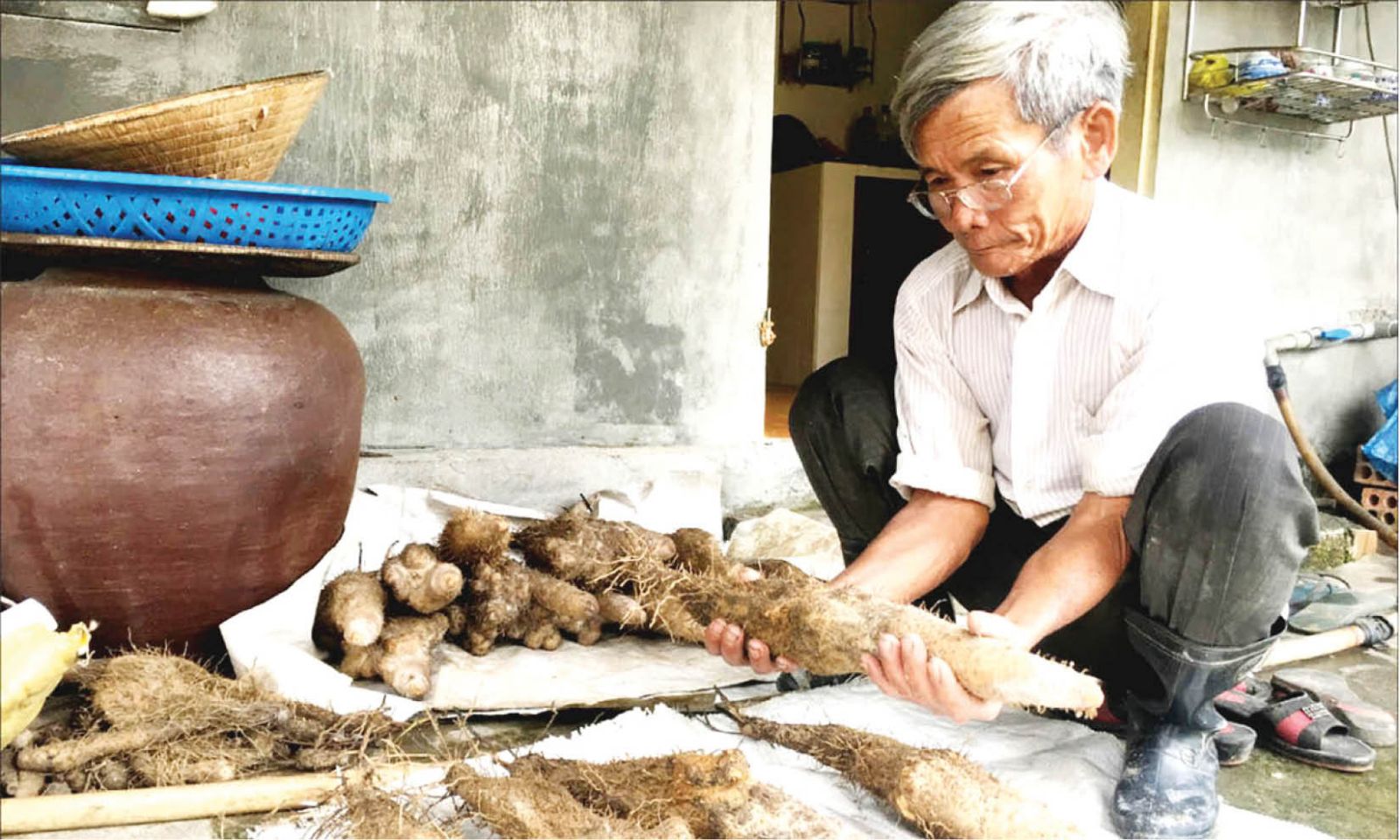
Yams are famous specialties of My Loi Village. Photo: hoinongdan.org.vn
Folk rites and royal rituals have one universal value which lies in the story of My Loi’s yams. It is a precious produce that was brought to the Inner Palace as an ingredient for sweet soup to offer to the lords of the Nguyen Dynasty as a privilege of the ancestors who founded the village, who were Trung Nghia (Loyal) Army serving Lord Nguyen Hoang since the year of the Horse (1558).
Yams are the customary name of Thu Du, also known as Son duoc or Ngoc dien, according to the Medical Manuscript. They are often pounded into flour for cooking porridge, or thinly sliced for cooking sweet soup, both of these dishes are very delicious. The yam that grows on the string is called linh du tu.
Yams taste better than potatoes and can nourish the heart, kidneys, spleens and stomach. According to the Cuu hoang Medical Manuscript, yam sticky rice is very delicious, and yams can be baked, cooked, sautéed, and boiled. (QSQ of the Nguyen Dynasty, Dai Nam Nhat Thong Chi, Thuan Hoa Publishing House, T.I, p. 277).
Yam grows wild in mountainous areas of our country, mostly in the provinces of Ha Bac, Lao Cai, Yen Bai, to Thanh Hoa – Nghe An and Quang Binh.
Japanese researchers have extracted Mucin - a viscous protid, Allantoin, Amino acids, Arginine and Choline out of Chinese and Japanese hoai son, in addition to starch. Besides, there is Maltase which is the enzyme that digests maltose.
As food crops, yams contain 63.25% starch, 0.45% fat, and 6.75% protid. Recently, Saponins with sterol nucleus have been found in some varieties of Dioscorea plants. It has many pharmacological effects, one of which is the decomposition of the water-soluble Mucin into proteins and carbohydrates under the condition of dilute acid and high temperature.
While the yeast in hoai son has an exceptional ability of hydrolyzing sugar at a temperature of 45-55°C, it can digest 5 times as much as sugar within 3 hours under the condition of dilute acid, which can cure diabetes.
Therefore, in addition to nutritional value as food crops, this is also a medicine. In Oriental medicine, hoai son is considered a tonic and has waxy properties, used in cases of indigestion, chronic enteritis, spermatogenesis, nocturia, night sweats, and diabetes.
According to ancient documents, hoai son has the balanced sweet taste, and strengthens the four meridians of spleens, stomach, lungs and kidneys. It has strong beneficial effects on spleens, stomach, lungs and kidneys, curing thirst, asthma, cough and nephrotic syndrome. As a result, it can be used to treat long-term dysentery, thirst, asthenia, spermatosis, gynaecological diseases, frequent urination, with a daily dose of 10-20g in the form of a decoction or powder (Do Tat Loi, Vietnamese medicinal plants and herbs, H.: Medicine Publishing House, 2004, pp. 848-850).
Yams are plants with a stringy stem that grow in the wild. In My Loi village, wild yams once grew in abundance and intertwined in the bushes, so much so that local people dug and handed over to the lord's palace on the occasion of rituals and anniversaries.
According to the official regulations of the Nguyen Dynasty, as for banquets and feasts on occasion of rites and great rituals, there are up to 161 offerings, including many sweet soup dishes made from millet seeds, arrowroots, purple potatoes and especially yams (Cabinet of the Nguyen Dynasty, Kham Dinh Dai Nam Hoi Dien Su Le, Thuan Hoa Publishing House, 1993).
The results of the survey on Hue cultural and culinary heritage of Vietnam National Institute of Culture and Arts Studies in Hue, especially with the help of artisan Mai Thi Tra, have reproduced a lot of valuable documentary information about nutritious and laxative dishes made from yam such as sweet soup, porridge, stew, etc., which carry many historical and cultural values.
In particular, farmers in My Loi, who once over-exploited wild yams, now know how to propagate the plants and are in the process of recreating and enriching “Hue-specific” products to effectively put on the market.
By Tran Dinh Hang